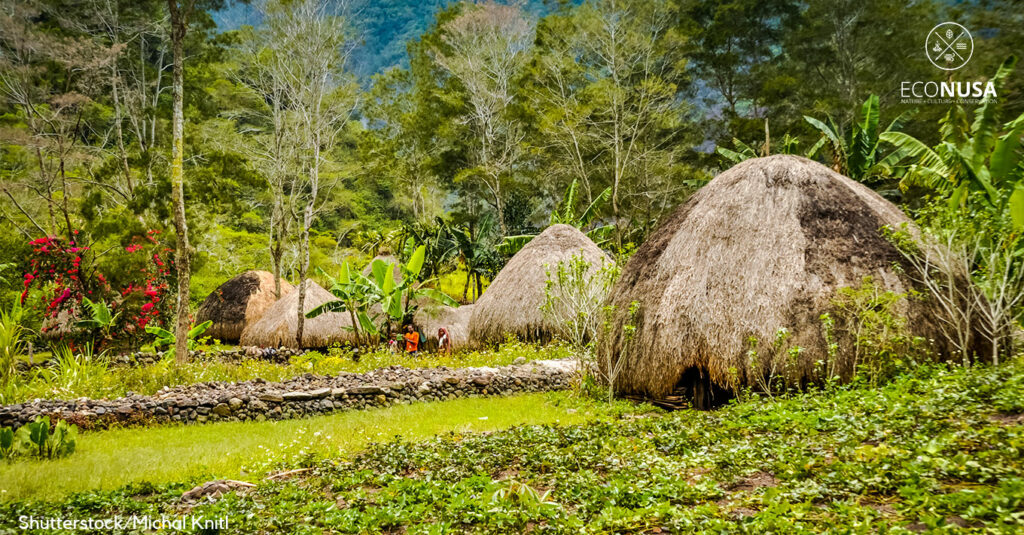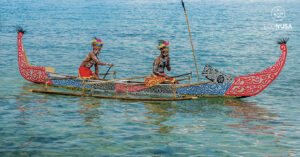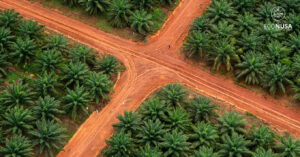
Since Covid-19 pandemic hit the world at the beginning of 2020, the health paradigm with the concept of “back to nature” has been increasingly lured public attention. More and more people prefer choosing natural ingredients as medicine for various diseases. No wonder now the potential of nature has been increasingly utilized by people to maintain a healthy body, ward off bad viruses, and treat various diseases. The efficacy of traditional medicine derived from biodiversity has been proven to be able to treat and maintain body fitness without significant side effects when compared to chemical drugs that are widely circulated in the market.
In fact, this has been done by indigenous tribes in the Land of Papua since time immemorial. The use of medicinal plants from the forest as traditional medicine is an ancestral heritage that has been carried out by the Papuan people from generation to generation until now.
Forests and indigenous peoples in the Land of Papua are inseparable things. For them, forest is like a mother who cares for, protects, and provides all the necessities of life. Most of the lives of the Papuan people depend on the forest, ranging from food sources, materials to build houses, to a “natural pharmacy” that provides various medicinal plants.
Read Also: Junior High School Graduates Trains Locals on Organic Fertilizer and Grafting
Papua’s land forests are like a treasure trove of biodiversity. Based on the Research on Medicinal Plants and Herbs (RISTOJA) conducted in 2017, as of the 25,000 plant species in Papua and West Papua, it is estimated that 983 plants have healing efficacy. This study also revealed that about 54.2 percent of the existing medicinal plant species were used without cultivation. It implies that medicinal plants are readily available and directly taken from the forest.
The Dani tribe is one of the indigenous tribes who lives and depends on the forest. The Dani have lived in the Baliem Valley area in the Jayawijaya Mountains, Papua, for thousands of years, and live by cultivating sweet potatoes and hunting for their daily sustenance. To keep healthy, the Dani tribe relies on nature as a living pharmacy.
Based on the research journal “Identification and Utilization of Medicinal Plants of the Dani Tribe in Jayawijaya Regency, Papua” written by Yuliana Mabel, et al. from Sam Ratulangi University in 2016, there are 16 species of medicinal plants from 12 families that have been identified and used as traditional medicine by the Dani people. These plants are planted in the yard of the house or taken directly from nature.
Read Also: Sasi Sambite: Local Wisdom to Boost Nutmeg Quality in Arguni Bawah
Most of the plants that are used as medicine are taken from the leaves for direct consumption or processed first. However, some herbal medicines use fruit, sap, rhizomes (a type of ginger, turmeric, etc.), as well as their stems as medicine. This knowledge is passed down from generation to generation. They got evidence of the efficacy of these plants after trial.
For example, the young leaves and fruit of giawas tree (Psidium guajava L.) are believed to cure diarrhea and cholera. Young leaves and fruit can be picked and eaten directly. Another plant is gedi leaves (Abelmoschu’s Manihot L.) or locally called helangka. For pregnant women, consuming ten boiled young helangka leaves every day is believed to help ease the delivery process. Processed helangka leaves cooked with lard can also treat toothache. There is also the use of the water from the trunk of haki tuma tree (Musa paradisiacal L.), a local banana tree, to increase stamina.
Several other medicinal plants are used by the Dani people because they are efficacious in curing diseases such as red fruit (Pandanus conoideus L.), also known as Saik. The extract of Saik fruit has been known for its efficacy to cure HIV/AIDS, cancer, coronary heart disease, and maintain body stamina. Then there are also itchy leaves or Yawi (Laportea sp), the native Papuan plant, which has fine hairs on its surface, have long been used to treat aches and pains by affixing them to body parts that feel sore.
Read Also: Indonesia Independence, Indigenous People’s Independence?
Got a flu attack? The Dani people use Siruk (Imperata cylindrical L.) shoots, a type of reed that is inhaled slowly to treat influenza. They also use the water decoction of the leaves of Irugum (Heigraphis colorata Hall.) to treat fever and cough. When there is an open wound on the skin, the Dani people usually pick the leaves of Anikukuh (Barleria prionitis L.), roll them, and attach them to the injured body part to speed up the healing process.
The use of medicinal plants by the Dani Tribe is a small example of the many practices of utilizing biodiversity for health performed by Papuan people. This evidently shows the strong relationship between indigenous peoples and forests in the Land of Papua.
Unfortunately, the threat to forests in the Land of Papua has not diminished yet. The Auriga report released in February 2021 shows that in the last two decades, natural forests in Papua have shrunk by 663,443 hectares and most of them have turned into oil palm plantations and mining areas. According to the results of land cover monitoring in Papua by the GIS and EcoNusa Research team (2021), the clearing of forest and non-forest land cover occurred in Boven Digoel, Merauke, and Nabire in Papua Province, Fakfak, Kaimana, Bintuni Bay, and Wondama Bay in Papua Province. West Papua.
Read Also: Egek Local Wisdom, Struggle to Protect Malaumkarta Raya Forests
Papua’s rich nature is a valuable asset that must be preserved for the welfare of the indigenous peoples who live in it. If properly maintained, biodiversity is not only beneficial for local communities, but also for Indonesia in general. Let’s together protect Papua’s forests because protecting forests is the same as protecting the welfare of indigenous peoples and Indonesia.
Editor: Leo wahyudi, Nur Alfiyah, dan Lutfy Putra




